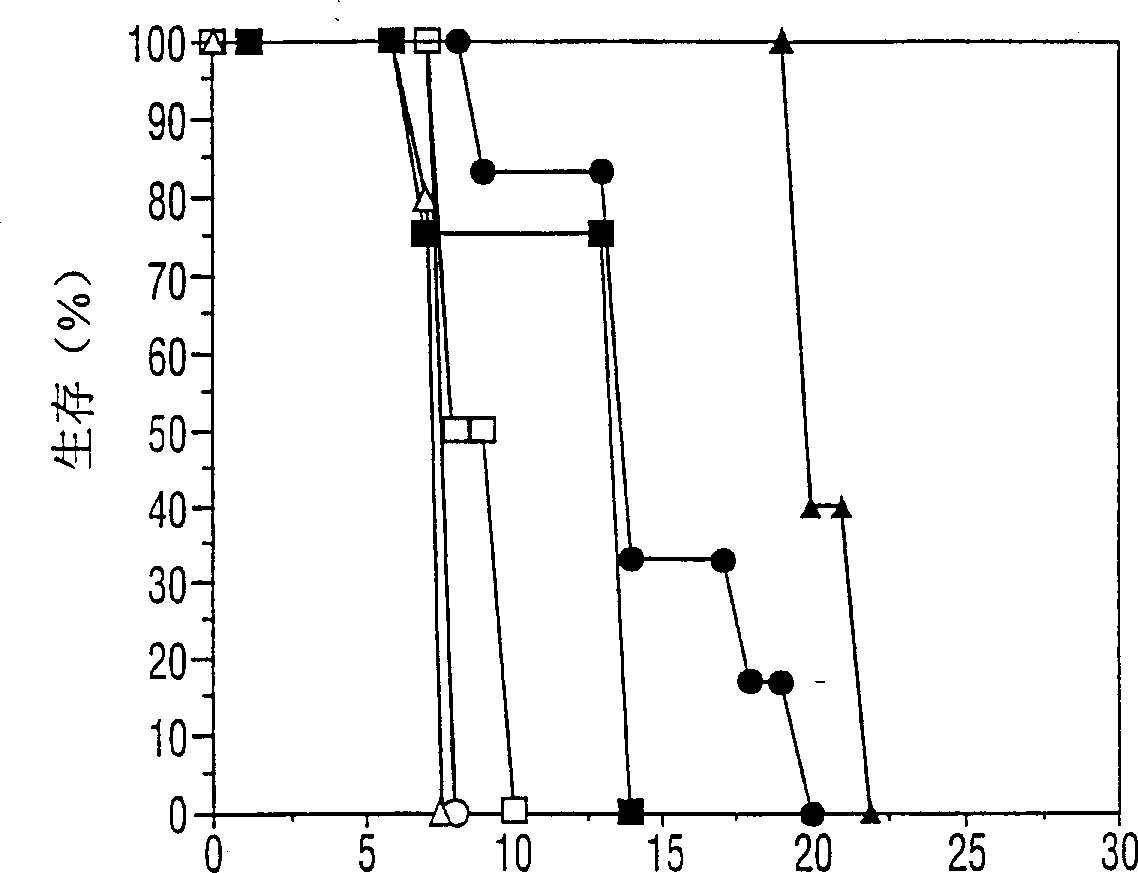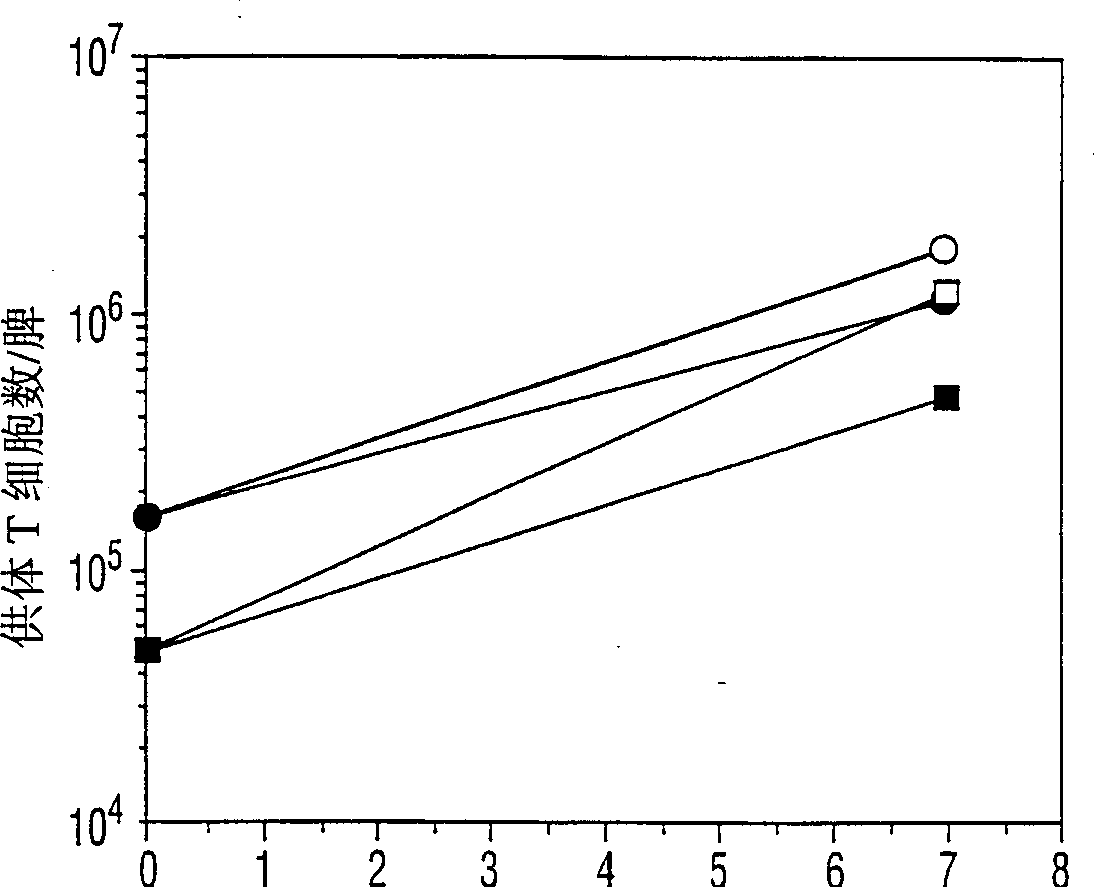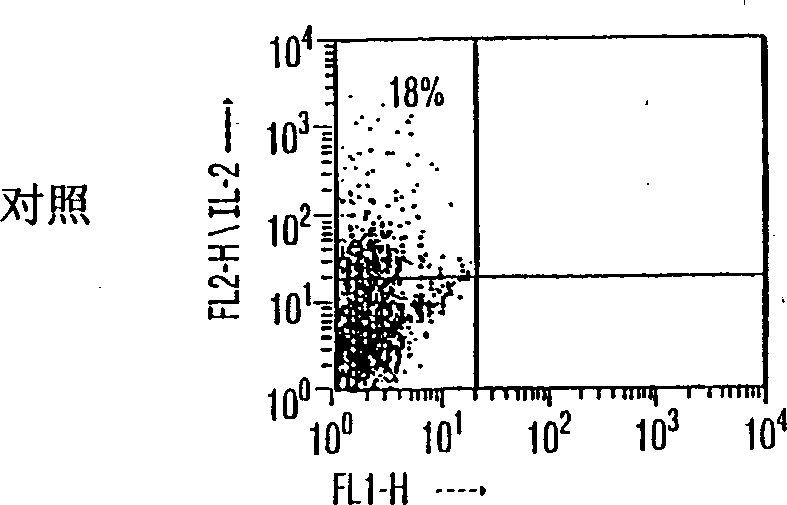Inhibition of graft versus host disease
A technology for bone marrow transplantation and patients, which is applied to the preparation of this component substance, which is given to patients in the field of oxidative stress in vitro, which can solve the problems of not being able to save the lives of patients, and achieve the effect of reducing risks and preventing failure and infection
- Summary
- Abstract
- Description
- Claims
- Application Information
AI Technical Summary
Problems solved by technology
Method used
Image
Examples
example 1
[0035] Splenocytes from C57B1 / 6J (B6) mice were suspended in α-MEM, 2ME, and 10% fetal calf serum (FCS) to a density of 10 7 / ml. FCS contains cytokines and growth factors. The cell suspension was irradiated by UV-C lamp with a wavelength of 253.7nm at 42.5°C, while the mixed gas of 14-15mcg / ml ozone / medical grade oxygen bubbled through the suspension. Treatment was carried out for 3 minutes.
[0036] Immediately after treatment, the cells were only about 10% viable. Example 2
example 2
[0037] The experiment of Example 1 was essentially repeated except that the cells were suspended in 100% FCS. In this case, the immediate survival of the cells was 50-60%, indicating that the factors present in the FCS are protective for at least some of the cells. Example 3
example 3
[0038] B6 murine splenocytes suspended in 100% FCS were subjected to UV-oxidation-heat treatment. At 42.5°C, the cell suspension was irradiated by a UV-C lamp with a wavelength of 253.7nm, while a mixed gas of 14-15mcg / ml ozone / medical grade oxygen bubbled through the suspension. Treatment was carried out for 3 minutes. Different amounts were injected into sublethally irradiated CB-17 SCID mice. Their subsequent performance was compared to those receiving the same number of untreated B6 splenocytes.
[0039] Figure 1 is a graphical illustration of the results of these experiments, where the % survival of animals in each group is plotted on the ordinate against the number of days after injection of treated and untreated cells. Survival was significantly improved at all dose levels when treated cells were used relative to untreated cells, showing the potential of the method of the invention to alleviate GVHD.
[0040] Figure 2 is a plot of the number of cells per spleen donor...
PUM
 Login to View More
Login to View More Abstract
Description
Claims
Application Information
 Login to View More
Login to View More - R&D
- Intellectual Property
- Life Sciences
- Materials
- Tech Scout
- Unparalleled Data Quality
- Higher Quality Content
- 60% Fewer Hallucinations
Browse by: Latest US Patents, China's latest patents, Technical Efficacy Thesaurus, Application Domain, Technology Topic, Popular Technical Reports.
© 2025 PatSnap. All rights reserved.Legal|Privacy policy|Modern Slavery Act Transparency Statement|Sitemap|About US| Contact US: help@patsnap.com



